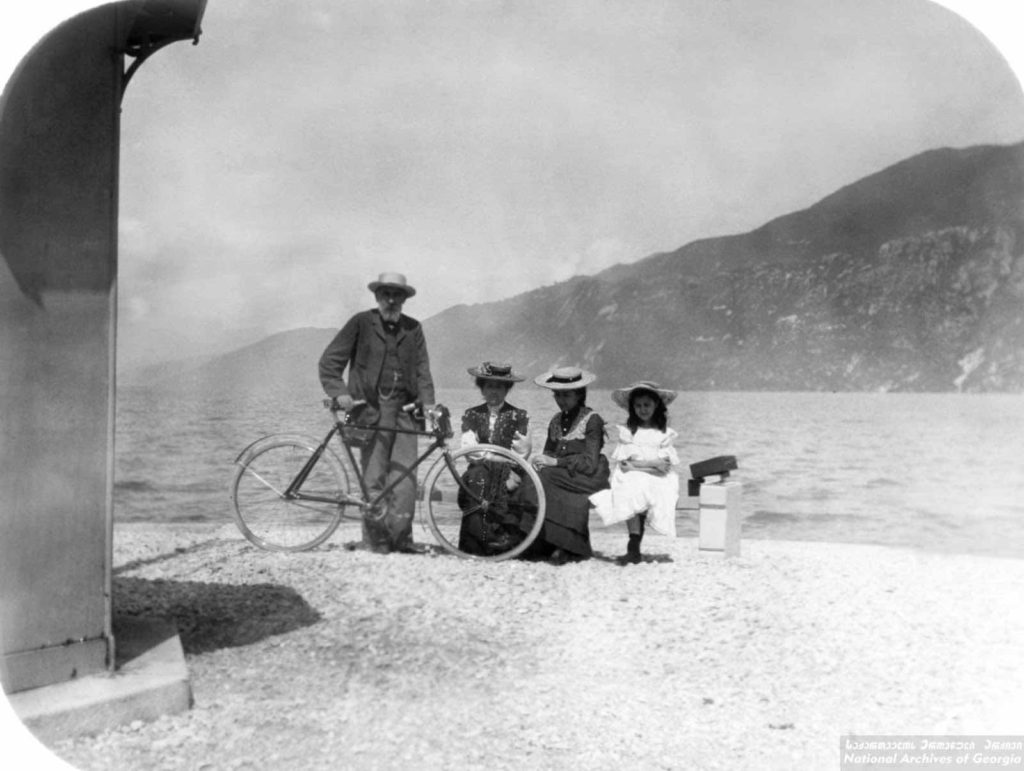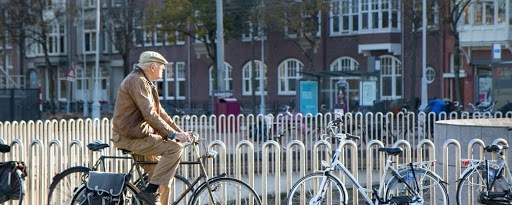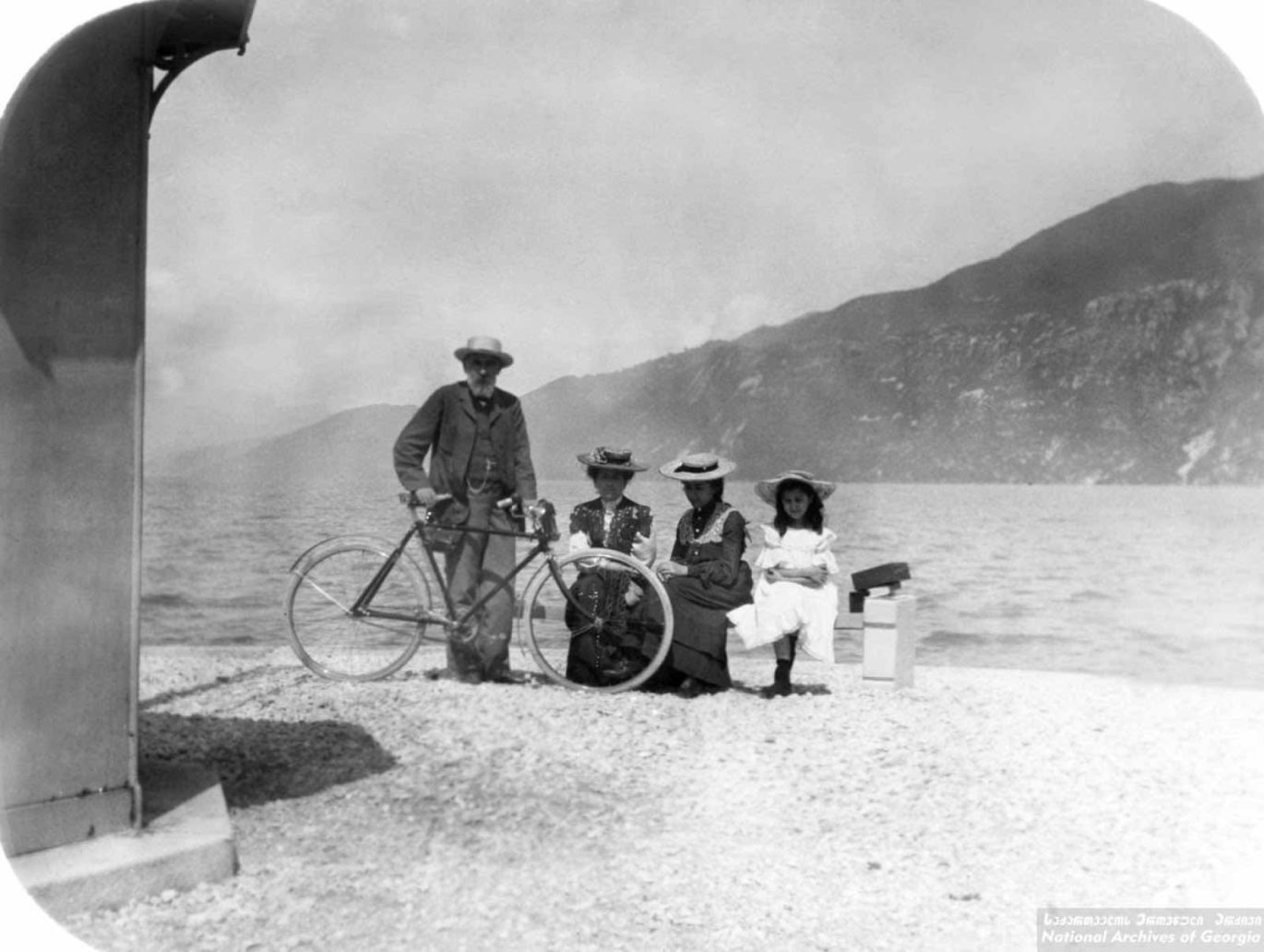Importance of the Historical and Social Context for Promotion of Cycling in Georgia
Georgian children often dream of having a car, most likely the fancy one. As it is considered, children construct their behavior, or they even tend to build their dreams on the accepted standards and norms in surrounding society. From this perspective, many people’s childhood admirations are quite natural as they grow up in a car-centric society, where owning a car is considered as one of the indicators of personal success.
Even though Georgia is already established as a “motorized country”, it still has a great potential for the development of sustainable transport solutions. However, it requires behavioral changes of the society and policy makers, infrastructural works, educational programs, awareness raising campaigns, etc. On the other hand, if we want to change something be it a phenomenon, behavior and standards, we must understand it first. Understanding on its own is based on the information and facts that were being accumulated throughout history.
History of cycling in Georgia: Rise and downfall
Generally, when it comes to advocating sustainable transport policy with the strong focus on cycling promotion in Georgia, skepticism becomes mainstream among policy makers and majority of the citizens, that are mostly comprised by car owners. Emphasis is often placed upon Georgia’s “Motorized Past” and national wide conclusion that “we aren’t Netherlands”. History, on the other hand, annuls the basis of the mentioned skepticism: in fact, shortly after Pierre Michaux, who was one of the inventors and inspirer of bicycles, invented two-wheeled velocipede (bicycle) [1], first cyclists’ society was established in Tbilisi in 1888. [2] In 1889 first Pierre Michaux bicycle was brought to the village of Didi Jikhaishi in Samtredia municipality by Georgian public figure Niko Nikoladze. [3] Moreover, in 1892 first cycle track was constructed in the city center, near todays Marjanishvili Theatre. [4]

Shortly after the first bicycles appeared in Tbilisi, the idea of the new vehicle was foreseen as a very profitable by the local merchants, so called, Sovdagrebi and soon bicycles became an important part of Tbilisi’s urban mobility. Unfortunately, cyclists were fascinated by the power and speed of their bicycles and they often violated road rules. As a result, in 1905 city governor decided to ban cycling mobility in Tbilisi streets [5] and basically, that’s where the era of cycling mobility ended in Tbilisi.
So, if we take the past experiences as the determinant of country’s potential in establishment of the cycling mobility, there is no legit basis for nihilism in Georgian society. Even though bicycles as a means of transport were used for a short time in the past, from this perspective, it appears we probably were more than the Netherlands at the end of 18th century. Georgians were one of the first, who developed cycling culture and used it for utilitarian purposes rather than only as a sport activity.
What went wrong?
As the history stipulates, Georgia was actively keeping up with the west’s development in terms of the urban mobility innovations. So, what went wrong? Why did this process totally collaps?
History has answers for these questions and they are connected to one huge historical event of the 20th century: creation of the Soviet Union. As mentioned above, the downfall of cycling started with banning bicycle traffic in Tbilisi streets and in fact, there was no time for reconsideration of this decision as sooner Georgia became part of the Soviet Empire.
Being a soviet country meant that Georgia was involved in Stalinist pressure for rapid industrialization and appreciation for economies of scale. This process brought about the construction in the late 1920s and early 1930s of massive factories manufacturing highly standard vehicles. [6] In addition, modernist approach was established in the soviet space, according to which motoring was considered as a determinant of the technological and economic progression, on the other hand, bicycle transportation as an impediment to the efficient and fast circulation of traffic. [7]
Exactly this is where Georgia went wrong with something that wasn’t dependent on itself. In fact, the whole 20th and first decade of the 21st century was a battle and struggle of the country for independence, transition and survival. In other words, there was no time and resources for rethinking the traffic preferences and that’s the reason behind establishment of the “motor centric” society.

Cycling Promotion: Technical and Social Aspects
Recent developments show that Georgia tries to slowly implement sustainable transportation practices, however modernist image of “designing the cities around automobile, where people would live outside the city, commute by car into the city every day, so everyone would have more light and space and air”, [8] is still trendy. Plus, cycling more frequently is used for recreational and sporting rather than for utilitarian purposes. In addition, cycling is still associated with poverty and lower social status, so using it isn’t prestigious at all.
Given the fact that Georgia’s big cities are characterized with traffic problems in terms of congestion, parking, reduced levels of amenity and livability, air pollution, climate change and road traffic injury, how shall we act? Where is the solution?
Review of the whole Georgian cycling history was essential as effectiveness of policies largely depend on existing cycling patterns, the nature of bicycle use and ingrained/related behavior, all of which are embedded in socio-cultural and national contexts. [9] Based on this, cycling development has two main aspects: Technical and Social Contexts.
Technical aspects
Technical context, such as construction of connected, safe and independent cycling infrastructure is essential for establishment of cycling traffic. Let’s not forget the fact that one of the reasons of mainstreaming car usage is availability of comfortable infrastructure, such as corresponding road quality, petrol/gas stations, traffic regulation, safety, connectedness, car-repair services, [10] etc. Thus, policy makers shall take this practice into account and build the attractiveness of cycling. This can be done through creating wide bike-parking spaces, integrating them to the public transportation and at the same time, making private cars more expensive, less comfortable and less necessary with the help of higher taxes and maintenance costs.

Social aspects
As stated above, technical aspects are very important, however as cycling is a newly constructed behavior of road users, social aspects are no less crucial and necessary. Awareness raising campaigns and pre-school/school educational programs, lessons on cycling rules and safety, integrating cycling aspects in the driving license examination – all of these will contribute to popularization and establishment of the cycling behavior in Georgian society.
In addition, as imitation is very common among Georgians, participation of the groups, who are influential for the whole society, is extremely important. It is noteworthy that whenever there are talks about sustainable transport promotion, various groups of the society, such as celebrities, politicians, public figures are included. However, the most important and influential representatives of the society are somehow excluded – the Clerics. As stated above, for establishment of sustainable transportation practices, behavioral change is essential and in fact, religion is something that can make people reconsider their habits, perceptions and preferences.
Religion plays a determinant role for the majority of Georgian population. Thus, clergy shall promote more usage of sustainable transport and less dependency on private cars. This can be done through including this topic into preaching during the weekly services, clerics becoming role models by cycling frequently, initiating the construction of cycling infrastructure along the religious buildings, etc. If the religion portrays a very positive image of cycling by delivering the message that since it doesn’t harm the environment and has a positive impact on people, it contributes to well-being and kindness of the whole society. As a result, cycling might be perceived as a beneficial mean of transport that will result in a spiritual incentive to cycle more often. This is a very good example for portraying the importance of why the socio-cultural context of the country is essential when referring to the establishment of the new behavior.

Conclusion
To sum up, consideration of historically evolved context and related socio-cultural interrelations is crucial for establishment of sustainable mobility. It won’t be an easy transformation, but other way around, it will be a long and challenging process that will require motivation, resources and commitment of the whole society. However, as Sam Cook said: “A Change is Gonna Come” – so, with a joint will and striving of the citizens and decision-makers, Georgia is capable of achieving the establishment of a sustainable and cycling-friendly society, where children will no longer dream about having a fancy car, but rather the fancy bicycle.
source
- Bicycle History. (n.d.). Pierre Michaux biography and facts – First bicycle prototype. Bicycle History – Evolution of Cycling. https://www.bicyclehistory.net/bicycle-inventor/pierre-michaux/
- Kokheridze, M. (n.d.). ველოსიპედი. PERSONA GRATA. https://malkhazkokhreidze.wordpress.com/2019/07/06/%E1%83%95%E1%83%94%E1%83%9A%E1%83%9D%E1%83%A1%E1%83%98%E1%83%9E%E1%83%94%E1%83%93%E1%83%98/
- National Arcihve of Georgia. Niko Nikoladze. https://archive.gov.ge/ge/2011-2015-1/niko-nikoladze-170-1
- ქართული სპორტი. (n.d.). ველოსპორტი. ქართული სპორტი. https://sport.gov.ge/index.php?pg=sporttypes&sportid=12
- Kokheridze, M. (n.d.). ველოსიპედი. PERSONA GRATA. https://malkhazkokhreidze.wordpress.com/2019/07/06/%E1%83%95%E1%83%94%E1%83%9A%E1%83%9D%E1%83%A1%E1%83%98%E1%83%9E%E1%83%94%E1%83%93%E1%83%98/
- Pike, J. (2016, 3). Soviet Automotive Industry. Global Security. https://www.globalsecurity.org/military/world/russia/cccp-industry-auto.htm
- Oosterhuis, Harry. (2016). Cycling, modernity and national culture. Social History. 41. 241. 10.1080/03071022.2016.1180897. https://doi.org/10.1080/03071022.2016.1180897
- Bruntlett, C. (2018, December 26). No helmets, no problem: how the Dutch created a casual biking culture. Interview by D. Roberts. Vox. https://www.vox.com/science-and-health/2018/8/28/17789510/bike-cycling-netherlands-dutch-infrastructure
- Oosterhuis, Harry. (2016). Cycling, modernity and national culture. Social History. 41. 248. 10.1080/03071022.2016.1180897. https://doi.org/10.1080/03071022.2016.1180897
- Steg, Linda. (2007). SUSTAINABLE TRANSPORTATION. IATSS Research. 31. 59. 10.1016/S0386-1112(14)60223-5. https://www.researchgate.net/publication/273510945
Author takes responsibility for the content of the article and it may not correspond to sustainability.ge mindset.
See Also: მდგრადი ტრანსპორტი: არიდება – გადასვლა – გაუმჯობესება

